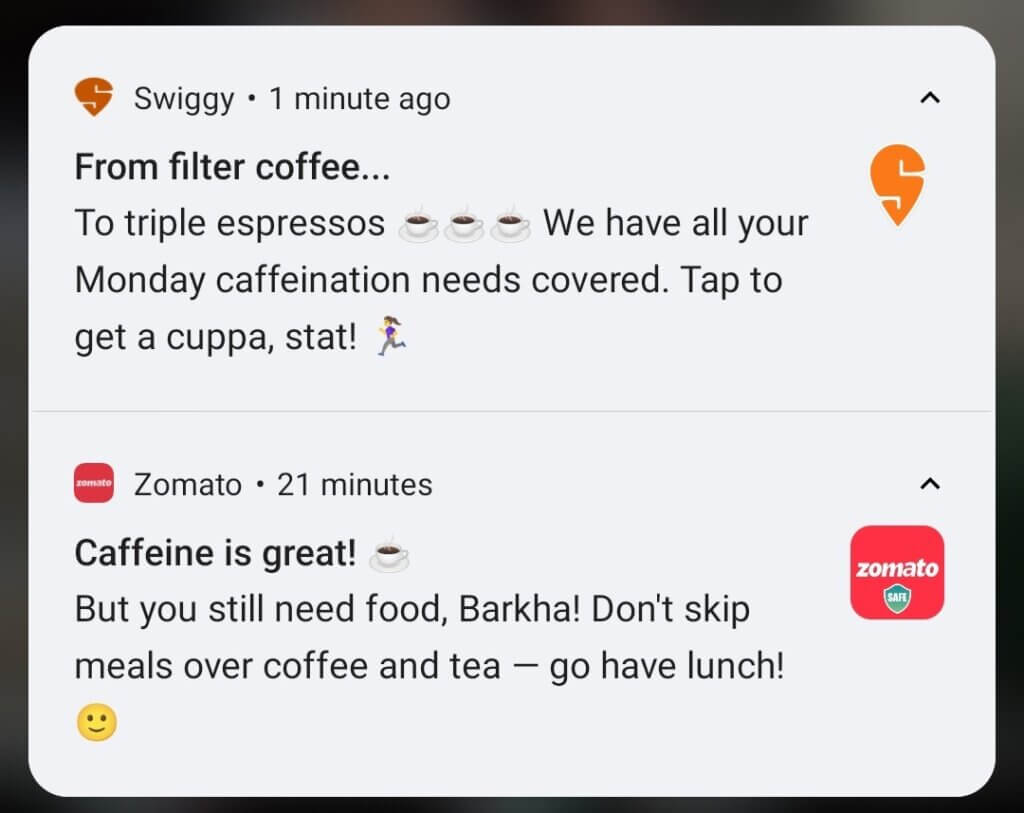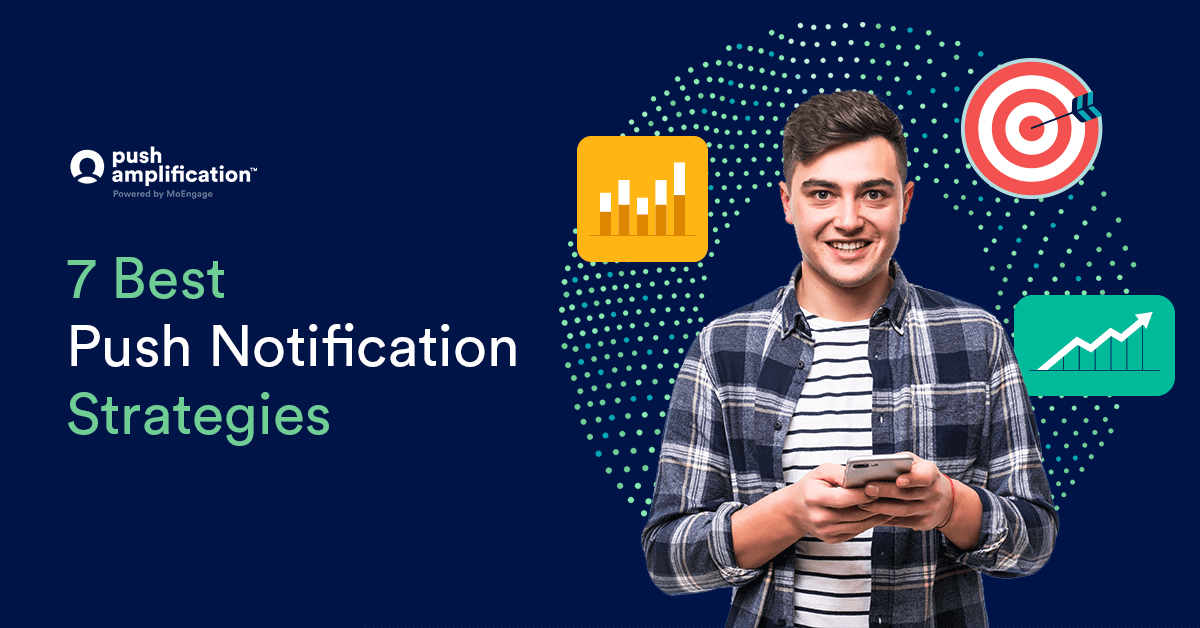In the busy digital world, where consumers’s focus shifts quickly, push notifications are like bright signals. They can grab attention or disappear unnoticed.
Crafting a winning push strategy for these digital nudges isn’t just a choice—it’s the linchpin between resonating with customers or being lost in the cacophony of their screens. It’s the art of seizing attention, sparking engagement, and cultivating a loyal audience amidst the incessant hum of notifications.
The right push strategy isn’t just important; it’s the difference between becoming an unforgettable presence or a mere blip in the digital landscape.
Here are the seven push notification marketing strategies that can help your messages stand out and drive conversions –
Best Strategies For Push Notification Marketing
1. Set Clear Marketing Goals
Creating a successful push notification marketing campaign requires a solid strategy; otherwise, you’ll go in circles. While marketers understand this, they often overlook crafting a deliberate push marketing strategy. This oversight means they need to improve on enhancing customer retention.
To make this strategy effective –
- Consider different triggers for push notifications.
- Identify various customer behaviors you wish to reach/engage.
- Define the specific goals you want to accomplish through push notification marketing.
The more refined your triggers, the higher the likelihood of engaging customers effectively.
For instance, if your application facilitates contest and event registrations, a notification reminding customers of the approaching registration deadline could significantly increase their chances of signing up.
2. Consider Permissions of Your Customers’ Devices
For the longest time, you didn’t require explicit permission from customers to send push notifications on Android. However, Android 13 allows customers to choose which apps can send them notifications, giving them control. Brands must now ask for permission from customers before sending notifications, a change from how earlier OS versions worked.
Requesting permission from customers for push notifications can be perceived as a form of manipulation. Unfortunately, many apps stumble at this stage as most customers hesitate to grant access to their data. Android’s permission system, for instance, raises concerns about sharing personal information, leaving clients uncomfortable with these requests.
To mitigate privacy apprehensions, marketers must prioritize addressing the value of the notifications they send, thus creating a more user-friendly mobile push notification marketing strategy. Marketers can ensure they only deliver relevant information by seeking customer input regarding their preferences for updates, enhancing the overall customer experience.
Some marketers opt to delay permission requests. For instance, in a messaging app, customers might be asked later whether they wish to receive notifications when their friends respond.
3. Adopt Creative Ways of Sending Notifications
Traditional text notifications belong to the past; today, technological advancements enable a transition to a new level of communication. Modern capabilities allow for the integration of eye-catching visuals and interactive elements within notifications, elevating the customer experience.
This shift presents an opportunity to transform a simple call to action into an immediate interaction, significantly boosting retention rates. Imagine the impact of creating interactive and entertaining apps for customers—such initiatives can enhance engagement and customer retention.
Here’s how it works – By leveraging social connections, you can enhance customer engagement by informing them about their friends’ activity within the application. A well-crafted push notification could notify customers about their friends’ actions and invite them to take further actions like “liking” or “sharing.” This adds social value to your push notification, increases relevance, and fosters deeper customer engagement.
4. Identifying the Best Time to Send is Important
Timing holds significant importance in push strategy. Sending them at the right moment ensures a positive reception from customers while minimizing irritation. Selecting a comfortable timing for notifications involves steering clear of periods when customers are likely busy or asleep.
Balancing the need to avoid disruption to establish meaningful connections is crucial. Understanding your audience and the content you intend to deliver becomes essential to achieve this.
Experts often suggest that the afternoon represents an optimal time for sending notifications. However, as mentioned earlier, the effectiveness of timing hinges on your specific objectives, industry context, and the characteristics of your target audience.
Here is an example of Swiggy and Zomato – two of the leading food delivery apps based out of India, delivering notifications at the time of breakfast and then for lunch:

You don’t have to do hard work analyzing the data; you can just leverage the “Best Time to Send” functionality inside MoEngage. Read more about it here.
5. Create Engaging Content for Notifications
Your notification content must be engaging and highly targeted to get engagement. Here are some tried and tested tips:
- Ensure your text is concise yet informative.
- Incorporate a clear call to action within your push messages.
- Capture interest with a captivating joke or phrase.
- Include an element of entertainment to sustain attention and leave a lasting impression.
Moreover, personalization stands as one of the vital aspects of your message. Deliver personalized messages that immediately grab attention.
Here’s how it works: Take a personalized approach by using names and referencing the customer’s recent activity within the app. For instance, if you retail products and know customers’ preferences, mention when those items are on sale.
For instance, your notification could read: “Hello, Susan! The bag you added to your wish list is now on sale! Grab it at a discounted price!” It’s essential to maintain a friendly tone. Be personal, but avoid being overly casual.
Here is an example from a Fashion brand grabbing eyeballs:

6. Analyze the Frequency of Notifications
A successful push notification strategy hinges on finding a delicate equilibrium, ensuring customer connection without overwhelming them.
Here’s the approach: Categorize push notifications into two groups. The first group should relay information about other customers’ actions (“Your friend Judy liked your photo”). customers typically appreciate these messages. However, the second group should deliver direct information about in-app deals (“Check out the new special offer!”). While these notifications are relevant, caution is necessary regarding their frequency to avoid overwhelming customers.
7. Perform A/B testing
In mobile apps, exploring and refining various options for each parameter outlined in this article is essential. The best way to discern the most effective method is through experimentation and measurement of results. This ongoing process should become a routine part of your notification strategy.
Testing diverse approaches to push notifications and experimenting with different content, tones, and timing is pivotal to grasping what captivates your audience. Understanding what prompts customer engagement with your offers can aid in developing the most potent communication strategy.
Wrapping It Up
The mentioned push notification strategies are a fantastic starting point if you aim to gauge interest and build momentum among your subscribers. However, adhere to push notification best practices before implementing significant changes, as overlooking these guidelines may lead to customer loss or increased app uninstalls. Integrating push notifications into your marketing endeavors can yield remarkable outcomes.
In the digital world of a bustling city, push notifications are like bright signals amid all the commotion. This Push notification guide is like a treasure map, guiding you through seven secret strategies to spark these signals and grab attention.
From setting goals to respecting customers’ choices, this guide shows how to make notifications consumers want to see. Understanding when to send, what to say, and how often are the key ingredients to tailoring the best push notifications for your marketing campaigns

